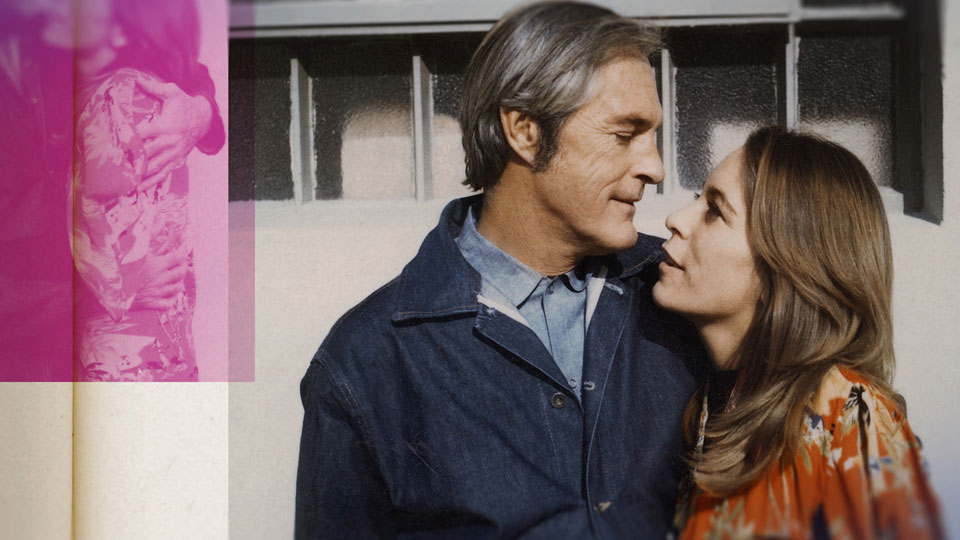
The 34th annual AFI Fest is arguably Los Angeles’s biggest and best film festival, and this year it is taking place virtually through Oct. 22 (see more here). The closing world premiere of the American Film Institute’s yearly fete is the Showtime documentary My Psychedelic Love Story, wherein Timothy Leary, the High Priest of LSD, meets Errol Morris, the High Priest of documentaries. Their meeting of minds on celluloid is a collision of cosmic consciousness, as Morris is to nonfiction cinema what Leary was to mind-expanding drugs.
Leary, of course, was the counterculture’s guru, a psychologist who went beyond Freudian boundaries by adding psychedelic drugs to the study of the brain as part of an elusive odyssey for enlightenment. The enormously famous—and infamous—elder statesman of the Flower Power generation urged American youth to “turn on, tune in and drop out.”
The innovative Morris, who co-won the Best Documentary Oscar for 2003’s The Fog of War, is known for opening up the nonfiction film form far beyond its tried and true, staid genre conventions. Early on in his exemplary career, in 1988’s crime drama The Thin Blue Line, Morris enhanced the onscreen talking heads with startling close-ups, memorably including original shots of milk shakes flying through the air in slow motion. 2017’s sprawling Wormwood is an imaginative mixture of original and archival actuality with extended excerpts from Laurence Olivier’s 1948 Hamlet and lengthy reenactments by actors such as Peter Sarsgaard.
Morris’s groovy movie uses a psychedelic style to tell the inside story of Leary on the lam and his love affair with Joanna Harcourt-Smith, 26 years his junior. As the Moody Blues prominently put it, “Timothy Leary’s dead” (at least since 1996), but Joanna is very much alive. As she says in extensive interviews specifically for My Psychedelic Love Story, she sought Morris out to tell this story on the screen. Joanna is the 101-minute doc’s main talking head, although Leary is glimpsed in footage and news clips galore. (Speaking of “galore,” Morris rather amusingly intercuts scenes from Goldfinger—wherein Pussy Galore is one of 007’s Bond Girls—to jazz up his nonfiction production, in what may be a first for documentary filmmaking. Take that, John Grierson!)
And what a saga Joanna has to tell! The film reveals deep dark secrets from her private life, but more important, explores what may have been the CIA’s role in recapturing Leary after he escaped from a California prison and went on the run to Switzerland in the early 1970s, where he encountered the European beauty Joanna. They were introduced by actress Anita Pallenberg, known for her own affairs with members of the Rolling Stones. Despite usually being broke, Joanna moved in jet set circles due to her élite birth at St. Moritz and her sexual allure.
Faster than you could say “Jumping Jack FLASH,” Timothy and Joanna became lovers, and as they tried to stay one step ahead of the law, once the Swiss withdrew their welcome mat, the counterculture couple’s epic odyssey took them across the border to Austria, then on to Beirut and to Afghanistan which, in those pre-Taliban days, was considered to be a sort of hippie haven. At Kabul, the long arm of the law caught up with Leary and, as part of Nixon’s war on drugs, the Youth Culture’s High Lama was returned to the USA to face the music.
Although Wormwood is much more of a genre bender than My Psychedelic Love Story, the latter is thematically linked to Morris’s extravaganza in terms of the central roles played by LSD and the Central Intelligence Agency. Joanna worried if she was a plant manipulated by “The Company” to ensnare the fugitive guru, as Leary was sort of “public enemy number one” of Nixon’s drug war. Was Joanna “a sex spy” for Langley, Virginia?
She also wanted to find out what made Leary talk and spill the beans to the DEA once he was behind bars again, this time at the higher security Folsom Prison, where Tim claims the inmate in the neighboring cell was none other than Charlie Manson. Joanna wants Morris, the master documentarian, to unravel an almost half century-long “puzzle” and to expose what’s beneath the mysterious “veil” of obfuscation.
Morris’s mischievous movie missive provides answers, which this reviewer won’t reveal here. I thoroughly enjoyed his filmic romp, with its interweaving of Disney’s 1951 animated Alice in Wonderland, Marlene Dietrich in 1930’s The Blue Angel, Greta Garbo in 1931’s Mata Hari, Brigitte Bardot, Bond and other period pop culture references. They may seem to be extraneous but in fact they work well to enhance Psychedelic’s ambiance and theme. On the other hand, the roles of the Weathermen and Black Panthers in helping Leary, one of the planet’s most prominent political prisoners, to escape is barely mentioned in passing.
Nevertheless, I thoroughly enjoyed this look back through a glass darkly at an enigmatic figure who was headline news in the 1960s and ’70s. Morris’s cinematic sensibility meshes well with Leary’s psychedelic psyche. I found this trip down movie memory lane (and the rabbit hole) to be absorbing, but then again, I actually met the perpetually smiling Leary in person in 1976. I can’t help but wonder, though, will viewers unfamiliar with Leary and the period be interested in this page of counterculture history?
Be that as it may, Oct. 22 is the ideal date to debut this documentary, as it is the precise centennial of Timothy Leary’s birth. Happy birthday, Tim—wherever (and whoever?) you are!
For viewing details see here.












Comments